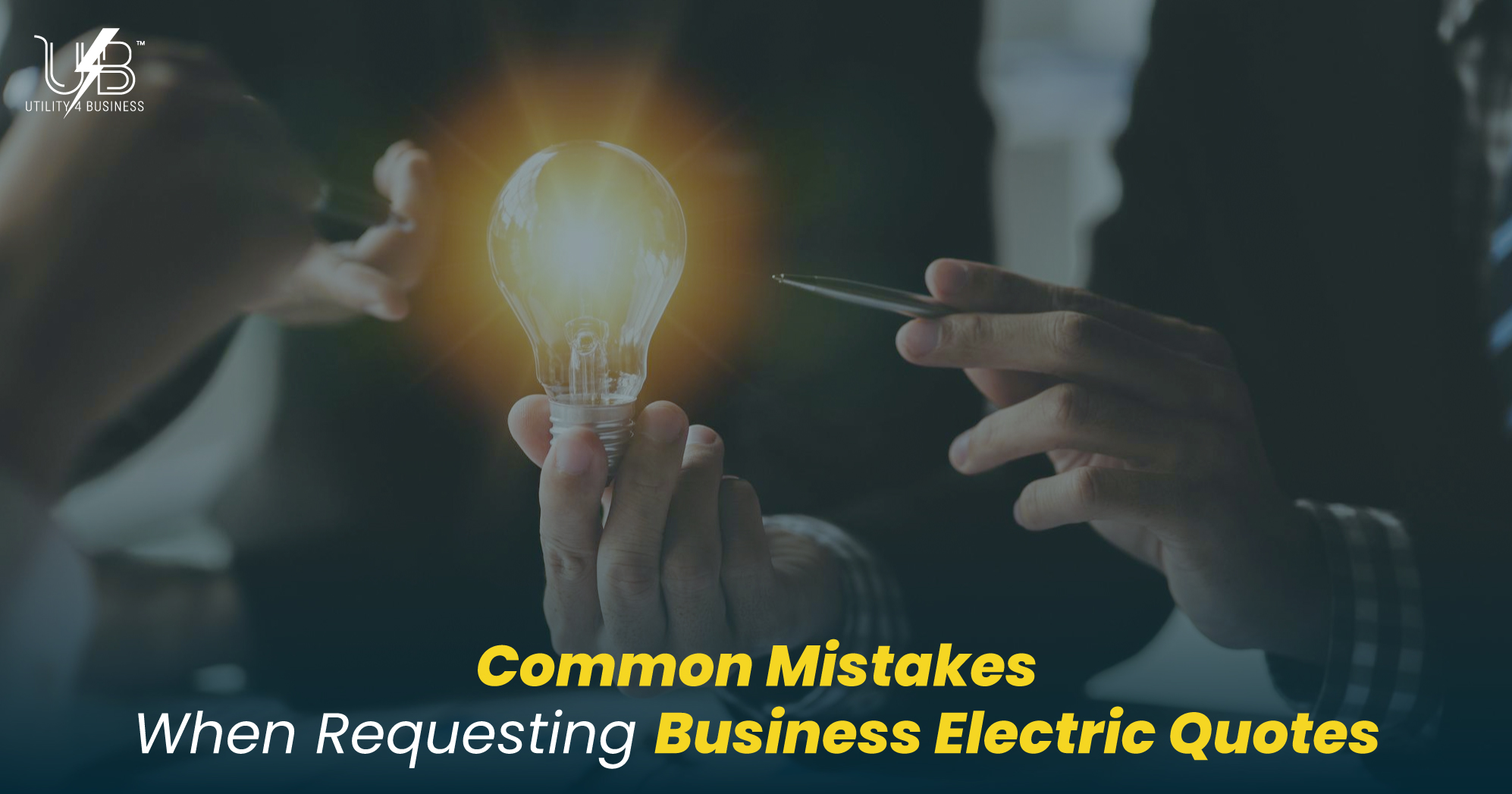Common Pitfalls in Business Electricity Comparison
The Hidden Costs in Energy Contracts

Energy costs take a big bite out of margins. The right contract cuts that bite down. The wrong contract does the opposite. Many teams try a quick business electricity comparison and sign the first good-looking quote. Later, the bill tells a different story. The gap between the headline unit rate and the final cost often hides in the details of usage patterns, standing charges, fees, and timing. This guide breaks down the traps that catch UK businesses and shows how to avoid them with a clearer, simpler way to compare business electricity.
Not Understanding Actual Consumption
A quote only makes sense in the context of real usage. Many businesses skip a full review of the last 12 months. That makes it easy to pick a tariff that suits the supplier more than the site.
Start with meter data and bills. Identify weekday and weekend patterns. Check peaks by hour and by season. A lower unit rate may not help if peaks fall into pricier bands or if the plan penalises demand spikes. When usage varies across sites, normalise it first. A single flat rate for a multi-site portfolio can look tidy, but it costs more across the year.
Ignoring Demand and Load Factor
Demand charges can dwarf savings from a small unit-rate cut. Load factor measures how evenly a site uses electricity. A low load factor means sharp peaks and long troughs. Peaks can trigger higher charges or ratchet clauses in some contracts. Smooth the load where possible. Stagger high-draw processes. Shift flexible tasks into off-peak hours if the tariff rewards it.
In a true comparison of business electricity prices exercise, include the impact of demand, not just energy volume. Ask for quotes that reflect measured peaks and expected improvements in load management.
Comparing Too Few Options
Many companies renew with the current supplier out of habit. Others stop after two or three quotes. The market moves fast. Wholesale prices change. Contract structures change. Standing charges change. Discounts change. Stopping early often leaves money on the table.
Use a structured business electricity comparison process. Shortlist tariff types that match the usage profile. Then benchmark multiple like-for-like quotes on the same start date, term, meter type, and credit assumptions. If something looks much cheaper, check the standing charge, indexation, and any “review clause” that can shift rates mid-term. A trusted specialist like Utility4Business can widen the field, remove noise, and keep the comparison clean and fair.
Misreading Tariff and Contract Types
A fixed tariff gives budget certainty. A variable or indexed tariff can win when markets fall, but it exposes the business if markets rise. Read the contract line by line. Confirm the start date and supply start tolerance. Pin down standing charges. Ask about pass-through items such as non-energy costs, where relevant. Clarify what happens if consumption swings outside the expected range. Some contracts include “take-or-pay” or volume tolerance clauses. Others add premiums if usage drops below a threshold.
Using Out-of-Date Data
Comparisons go wrong when quotes get pulled at different times and then mixed together. Markets move. A quote from last week does not match a quote from today. Comparing them side by side creates a false gap.
Lock a comparison window. Request quotes for the same day and similar cut-off times. If that is not possible, note the time stamp and rerun the outliers. This avoids picking the “cheapest” option on paper that no longer exists in practice.
Leaving Renewal Too Late or Too Early
Timing matters. Leaving renewal to the last minute narrows options. Credit checks rush. Start dates slip. If the contract moves to out-of-contract rates, costs can jump. On the other hand, fixing too early without a view on market trends can lock in a high price.
Plan a renewal schedule. For large users, explore forward starts and layered buying where appropriate. For SMEs, set a simple timeline: data check, market sounding, formal business electricity comparison, contract review, then signature. The schedule should allow for supplier validation and any meter work if needed.
Overlooking Standing Charges, Fees, and Non-Energy Costs
The cheapest unit rate can hide a higher standing charge. Over a year, that daily fee adds up. Some contracts separate the non-energy elements and pass them through. Others bundle them into the rate. Either way, the final bill pays them. Ask for a full-cost view in every quote.
Check for broker fees if they apply. Confirm whether the fee sits within the p/kWh or as a separate line. Transparency removes doubt and allows fair like-for-like evaluation.
Forgetting Energy Efficiency and On-Site Improvements
Comparing prices matters. Reducing consumption matters even more. Many businesses start a business electricity comparison without first removing waste. Old lighting, inefficient HVAC schedules, and idle equipment keep the bill higher than necessary. A short walk-through audit often finds quick wins. Fix the easy saves before signing a long contract. The load will drop, and the chosen tariff will match the new baseline better.
Ignoring Green Options and Reporting Needs
Sustainability targets now shape purchasing. Some plans offer renewable electricity or certificates that support reporting. Not all green offers are the same. Understand the source, the certification, and how it aligns with internal goals. If the business publishes a sustainability report, choose a contract that supports it with proper evidence.
In a comparative business electricity exercise, weigh green content alongside cost. A contract that ticks both boxes can support brand and compliance while keeping bills under control.
Failing to Plan for Growth, Seasonality, or Change
Energy use is not static. New machinery, an extended shift, or a new site can change the profile. So it can be a quiet quarter or a shutdown period. Contracts that look perfect on day one can strain under change.
Stress-test quotes. Ask how the plan handles a 15% upshift or downshift in volume. Confirm re-pricing triggers. If the business has high seasonality, look for structures that accommodate it. Build these scenarios into the business electricity price comparison, not after the signature.
Mixing Apples and Oranges in the Comparison
This pitfall shows up more than any other. Teams compare a one-year fixed against a two-year variable. They weigh a bundled offer against a pass-through offer. The result is confusion and poor decisions.
Standardise the basis first. Same term, same start date, same meter profile, same treatment of non-energy costs, and the same credit assumptions. Only then weigh the numbers. If terms differ, write down why and how that difference affects risk and cost. Keep a clear audit trail.
Choosing on Unit Rate Alone
The unit rate is the headline. It is not the full story. Standing charges, metering, payment terms, and volume clauses all affect the final bill. Focus on “all-in annual cost on expected usage,” not the rate in isolation. When a quote looks low, ask what makes it low. It could be a short term, an unusual index, or a strict volume rule. Make sure the reason fits the business.
Conclusion
Electricity costs are controllable with the right approach. The traps are known: unclear usage, narrow market checks, mixed quote bases, hidden fees, poor timing, and contracts that do not match how a site actually runs. Each trap has a practical fix. Use accurate data. With Utility4Business, that result is clearer contracts, fewer surprises, and lower costs over the life of the deal. Start the process now and put energy costs back under control.
Find This Article Helpful? Share It Now!
At Utility4Business, we offer top-notch customer support and business utility solutions for businesses across the UK. Consider sharing this article and helping others discover how our expertise can add value to their business success.

Read Our Latest Posts
Explore our latest blog posts and learn how Utility4Business can support your business growth with tailored utility solutions and services. Stay ahead of the curve with the latest information from industry experts and take advantage of our user-friendly comparison services to find the best business deals.


Get Connected
At Utility4Business, our team of experts can help you figure out the highest-value business utility deals that will help your business grow over time.


